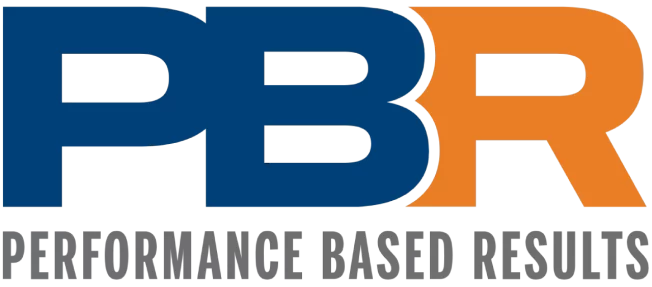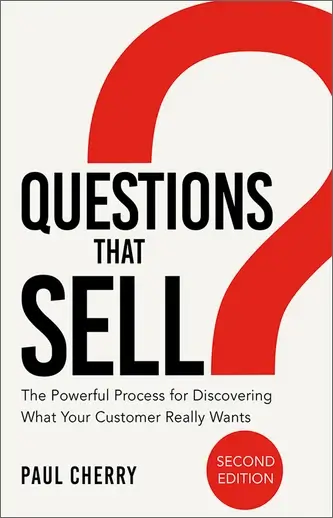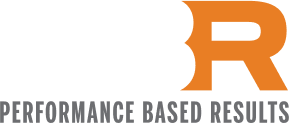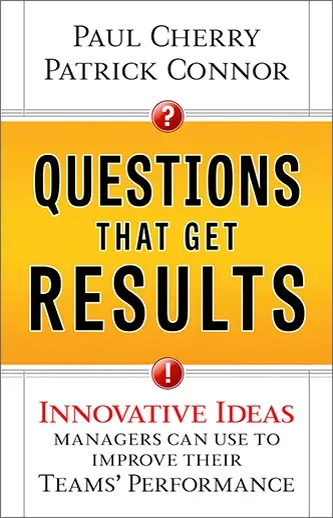In a world driven by sales, mastering high profit prospecting is key for business success. For leaders like Presidents, CEOs, and VPs of Sales, targeting and converting high-value prospects can make a big profit difference in their bottom line.
This guide will share practical strategies to enhance your prospecting efforts, ensuring you identify lucrative opportunities and engage them effectively.
By leveraging data, refining your techniques, and continually optimizing your approach, you’ll be able to boost sales, motivate your team, and see impressive results.
Dive in to discover how you can elevate your prospecting game and drive substantial growth for your business.
Identifying and targeting high value prospects
To maximize “high profit prospecting,” start by identifying and targeting high-value prospects. These are the clients most likely to provide substantial returns on investment. To pinpoint these opportunities effectively, incorporate thorough market analysis, data-driven insights, and competitive intelligence.
By focusing on prospects with significant potential, you can streamline your efforts and ensure your sales strategies are both efficient and successful. Let’s explore how to define and target these high-value prospects for big profit.
Defining high profit prospects
Defining high profit prospects is crucial for ensuring your prospecting efforts yield maximum returns. By understanding who qualifies as a “high profit prospect,” you can tailor your approach to target individuals or businesses most likely to deliver the greatest financial rewards.
High profit prospects typically exhibit specific characteristics: they have substantial purchasing power, show a clear need for your services, and are likely to engage in long-term business relationships.
To identify these promising leads, evaluate factors like annual revenue, budget sizes, and historical buying behaviors. By focusing on “identifying high value prospects,” you ensure your resources are allocated efficiently, maximizing your return on investment and driving sustainable growth.
Analyzing market segments
Analyzing market segments is crucial for identifying high profit prospects. Begin by defining your target segments based on industry, company size, location, and behavioral characteristics.
Delve into demographic data to understand the specific needs and pain points of each segment. This targeted approach helps tailor your messaging and solutions more precisely. Utilize advanced analytics tools to identify patterns and trends within these segments, providing actionable insights that can drive strategic decisions.
Benchmark against competitors to see how they are targeting similar segments and where opportunities may lie. By thoroughly analyzing market segments, you can prioritize efforts on those most likely to yield high returns, enhancing your overall prospecting strategy and boosting your sales performance.
Utilizing data and analytics for targeting
To achieve high profit prospecting, utilizing data and analytics for targeting is crucial. Data-driven decisions allow sales teams to pinpoint high-value prospects with greater precision. Start by collecting comprehensive data on your current customers, focusing on purchase behaviors, demographic information, and engagement patterns.
Advanced analytics tools can then segment this data, highlighting trends and identifying potential big profit opportunities. Implement predictive analytics to forecast which leads are most likely to convert into high profit customers.
Remember, integrating data analytics in your prospecting strategy transforms raw information into actionable insights, ensuring you focus efforts on leads that promise the highest return on investment.
Building ideal customer profiles
Creating an ideal customer profile (ICP) is crucial for effective prospecting. Start by analyzing your existing high-value clients to identify common characteristics. Look at demographics, firmographics, psychographics, and behavioral data.
Consider factors such as company size, industry, annual revenue, and geographic location. Psychographics like company culture and decision-making processes also play a significant role.
Your ICP should include pain points, motivations, and preferred communication channels. By understanding these elements, you can tailor your outreach efforts to resonate more with your prospects.
Utilizing data and analytics enriches this process, making it more precise and actionable, ultimately enhancing your ability to target and convert high-value prospects, thereby increasing profits.
Researching competitors and market trends
Understanding and analyzing your competitors and staying updated on market trends is crucial for high-profit prospecting. This practice helps in identifying potential gaps and opportunities while also keeping you ahead in a competitive landscape.
Firstly, analyze competitors by examining their sales strategies, customer reviews, and online presence. Tools like SEMrush, Ahrefs, and Google Alerts can provide valuable insights into their performance and customer engagement.
Additionally, attend industry conferences and webinars to gain firsthand information on emerging market trends. Subscribing to industry publications and following thought leaders on social media platforms can also offer real-time updates.
By researching competitors and market trends meticulously, you equip yourself with the knowledge to refine your strategies and target high-value prospects more effectively.
Effective techniques for prospecting
To achieve high profit prospecting, mastering effective techniques is crucial. Your ability to connect with prospects and convert them into loyal customers hinges on well-honed strategies.
Let’s explore some proven methods to help you succeed in your prospecting journey. From crafting compelling value propositions to leveraging social media and email marketing, these techniques ensure you reach high value prospects, ultimately driving big profit for your business.
Crafting a compelling value proposition
Creating a compelling value proposition is a fundamental step in effective prospecting. Your value proposition must clearly communicate the unique benefits your product or service offers and why it is the best choice.
Start by understanding your target audience’s pain points and desires. Then, highlight how your offering addresses these issues better than any competitor. Use clear, concise language to convey the main benefits and the specific outcomes your prospects can expect.
Emphasize unique features, cost savings, improved productivity, or any competitive advantage your solution provides.
Remember, a strong value proposition can significantly enhance your appeal, making it easier to attract and engage high-value prospects, ultimately leading to increased sales and business growth.
Leveraging networking opportunities
Networking opportunities can significantly boost your prospecting efforts, enabling you to connect with potential high profit prospects directly. Start by attending industry-specific conferences, seminars, and trade shows where you can meet decision-makers like CEOs, business owners, and sales managers.
Make sure to join professional associations and online forums to stay connected with like-minded professionals and share your expertise. Also, leverage your existing network by asking for introductions and referrals, which can lead to valuable connections.
Always follow up with new contacts promptly, and maintain a consistent presence by sharing valuable content and insights. By strategically leveraging networking opportunities, you establish relationships that can lead to big profit opportunities for your business.
Implementing a multi-channel approach
Today’s sales environment demands a multifaceted strategy to reach high-value prospects effectively. Implementing a multi-channel approach can significantly enhance your chances of success.
This method involves using various platforms to contact and engage potential clients, ensuring you capture their attention at different stages of their decision-making process.
Firstly, integrate email campaigns to deliver personalized messages directly to prospects’ inboxes. Combine this with social media outreach to engage with a broader audience and foster a community around your brand.
Next, utilize phone calls for more personalized, one-on-one interactions. Addressing call reluctance can be crucial here, as overcoming this challenge can improve your effectiveness in making these calls.
Attending industry events and webinars can provide face-to-face networking opportunities. Lastly, don’t overlook traditional methods like direct mail, which can stand out in a digital-heavy world. By diversifying your channels, you can maximize your reach and impact.
Utilizing social media for outreach
Leveraging social media for outreach is a game-changer in high profit prospecting. Begin by identifying platforms where your high-value prospects are most active, such as LinkedIn for B2B interactions.
Create engaging content that demonstrates your expertise and addresses pain points, positioning your brand as a thought leader. Use targeted ads and sponsored posts to reach specific market segments.
Engage with prospects by commenting on their posts and participating in relevant groups. Utilize advanced search features to find and connect with decision-makers.
Consider using analytics tools to track engagement and optimize your approach. By strategically using social media, you can create meaningful connections that drive big profit prospecting.
Employing email marketing strategies
Email marketing remains a cornerstone of effective prospecting efforts. By employing specific email marketing strategies, businesses can directly reach targeted prospects with personalized and engaging content.
Start by segmenting your email list to tailor messages based on the prospect’s stage in the sales funnel. Craft compelling subject lines that capture attention and encourage opens.
Utilize a mix of informative and persuasive content, highlighting your value proposition and addressing the prospect’s pain points. Include clear and compelling calls to action (CTAs) that guide the reader towards the next step.
Regularly track key metrics such as open rates, click-through rates, and conversion rates to analyze performance. Adjust strategies based on data to continuously improve your email marketing efforts.
Optimizing and measuring prospecting efforts
To optimize and measure your prospecting efforts, it’s vital to develop a structured plan and track key performance metrics. By analyzing prospecting results and adjusting strategies based on real data, you create a cycle of continuous improvement and refinement.
This approach ensures that your efforts remain effective and aligned with your business goals. Let’s explore the essential components of developing a prospecting plan, tracking metrics, and making data-driven adjustments.
Developing a prospecting plan
A well-crafted prospecting plan is the cornerstone of successful sales. It begins by defining clear, actionable goals tailored to your target market, which might include CEOs, business owners, and sales supervisors.
Next, identify the specific industries and regions you are targeting, ensuring alignment with where your high-value prospects are located, like the US and Canada. Incorporate a multi-channel approach, utilizing platforms such as LinkedIn, email campaigns, and webinars to reach potential clients.
Establish a timeline with regular milestones to track progress. Finally, continuously refine your prospecting techniques based on feedback and analytics. By developing a detailed and adaptable prospecting plan, you can systematically increase sales and improve overall business performance.
Tracking key performance metrics
Tracking key performance metrics is crucial for high profit prospecting. By consistently monitoring performance indicators, you can identify which strategies are driving big profit and which need improvement.
Essential metrics to track include conversion rates, which show how many prospects turn into customers, and the average deal size, which helps gauge the monetary value of each conversion.
Also, tracking the number of new leads generated versus the number of leads contacted provides insight into your outreach efficiency. Use tools like CRM software to automate and organize this data, ensuring you have up-to-date information for making informed decisions.
Consistently reviewing key metrics helps refine your approach, maximizing your success in high profit prospecting.
Analyzing prospecting results
Analyzing prospecting results is crucial for refining strategies and improving outcomes. Begin by collecting data from various channels such as emails, social media, and networking events. Use CRM systems to track interactions and gauge the effectiveness of each touchpoint.
Look for patterns in successful conversions and identify common traits among prospects who turned into clients. Evaluate the length of the sales cycle to understand where prospects drop off. By focusing on these metrics, you can pinpoint areas needing improvement.
Regularly review and update your analysis to stay aligned with market trends and customer needs. This ongoing process helps ensure your prospecting efforts remain targeted and efficient, ultimately leading to higher profits.
Adjusting strategies based on data
To maximize success in high profit prospecting, continuously adjusting strategies based on collected data is essential. Begin by analyzing key performance metrics to identify patterns and insights.
Are certain approaches consistently yielding better results? If so, double down on these strategies. Conversely, if some tactics are underperforming, it’s time to tweak or replace them. Regularly review data from various channels, including social media, email campaigns, and direct outreach, to stay agile and responsive.
Utilize A/B testing to experiment with different approaches, ensuring you align with market dynamics and customer preferences. By remaining data-driven, you adapt proactively, making informed decisions that drive big profit and optimize your high profit prospecting efforts.
Continuous improvement and refinement
Continuous improvement and refinement are essential for sustaining success in high profit prospecting. This process starts with regularly reviewing your prospecting strategies, identifying areas of success, and pinpointing opportunities for enhancement.
Utilize feedback from your sales team and analyze performance metrics to gain deeper insights. Implement small, incremental changes rather than overhauling your entire approach. This could mean tweaking your email marketing tactics, adjusting your networking strategies, or modifying your ideal customer profiles.
By fostering a culture of continuous improvement, you ensure that your prospecting efforts remain agile and responsive to market changes. This adaptability enhances prospecting outcomes and maximizes your chances of consistently closing high-value deals, thus driving sustainable growth.
Contact us now!
If you’re ready to transform your sales team and start seeing significant improvements in your revenue, don’t hesitate to reach out. At PB Results, we specialize in high profit prospecting strategies tailored to your unique business needs.
Our expert coaching in advanced questioning and listening skills ensures your team can close more sales, outdo competitors, and ultimately, increase profits. Whether you’re in the US or Canada, we’re here to help you motivate your sales team and achieve your goals.
Contact us now to discover how we can make your sales process more effective and efficient. Let’s start turning your challenges into opportunities for growth today!






